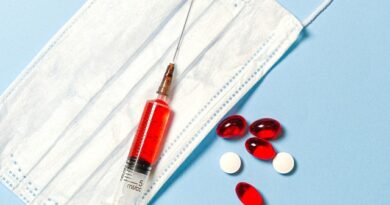Cells from human foetuses are important for developing vaccines – but they’re not an ingredient
Alessondra T Speidel, Karolinska Institutet
The US Conference of Catholic Bishops recently issued a statement advising Catholics to opt for the Moderna or Pfizer/BioNTech COVID-19 vaccines over the Johnson & Johnson vaccine, if possible, because human embryonic cells collected from an aborted foetus were used to develop the Johnson & Johnson vaccine.
Using human embryonic cells from aborted foetuses in vaccine development has been controversial for some faiths. Given the severity of the pandemic and the necessity that a significant percentage of the population must be vaccinated to protect public health, most faith communities have publicly stated it is morally acceptable to receive any of the authorised vaccinations, even those that used cells that have been replicated from those originally taken from aborted foetuses in their development. These replicated cells are known as cell lines.
Human embryonic cells have been used to develop safe and effective vaccines since the 1960s and have played varying roles in the rapid development of six of the eight authorised COVID-19 vaccines.
How it works
Modern vaccination has come a long way since 1796 when Edward Jenner infected his first “patient” with cowpox to prevent smallpox. One modern vaccination strategy is to hack viruses to deliver immunity. The adenovirus, a virus that can cause the common cold and other respiratory illness, has been re-engineered to create vaccines, including the Johnson & Johnson, Oxford/AstraZeneca, CanSino and Sputnik V COVID-19 vaccines.
The adenovirus is stripped of its original instructions, or genes, that trigger disease, and replaced with blueprints for a small part of the coronavirus – the spike protein. The body’s immune system recognises the spike protein as foreign and makes antibodies that then protect against future coronavirus infection.
Viruses are not alive and need to infect cells to propagate. To make enough re-engineered adenovirus for vaccines, cells that closely resemble the target of vaccination (humans) are needed. This is one reason scientists use human cells to create adenovirus-based vaccines. The adenovirus used in these vaccines also tends to infect human cells better than other animal cell types, making it easier to create more copies of the virus in human cells. For this, embryonic cell lines are sometimes used.
Two embryonic cell lines have been used to develop COVID-19 vaccines: human embryonic kidney cells called HEK 293 and human embryonic retinal cells called PER.C6. The PER.C6 cell line is from an elective abortion in the Netherlands in 1985, and the HEK 293 cell line comes from an undisclosed source (either spontaneous miscarriage or elective abortion) in the Netherlands in about 1972.
Johnson & Johnson used PER.C6 cells in their COVID-19 vaccine development, and the Oxford/AstraZeneca vaccine used HEK 293 cells. CanSino Biologics and Gamaleya Research Institute’s Sputnik V vaccines have also used HEK 293 cells.
Moderna and Pfizer/BioNTech used HEK 293 cells in their proof-of-concept tests to see effectively take up the genetic instructions contained in these vaccines and produce the required spike protein. But human embryonic cell lines were not used to make either company’s final vaccine.
HEK 293 and PER.C6 cell lines have been genetically altered to include the part of the adenovirus instructions that trigger replication of adenoviruses. This allows the production of a large amount of the final vaccination product and allows the removal of the adenoviral replication instructions in the vaccine.
This prevents further replication of the adenovirus in the patient. So the delivered dose of adenovirus infects a relatively controlled number of host cells, which create a limited amount of coronavirus spike protein, enough for the body to mount an immune response.
After a large enough dose of coronavirus spike-containing adenoviruses is collected, the adenovirus is purified and isolated from the embryonic cell material for inclusion in the vaccine. No embryonic cells are included in the actual vaccine.
Why are they used?
Before human embryonic cell lines were available, animal cell lines, such as monkey kidney, dog kidney and chicken embryo cells, were used to develop vaccines.
Between 1955 and 1963, the polio vaccine was grown in monkey kidney cells that were later found to have been infected with a virus called simian virus 40 (SV40), making vaccinated people vulnerable to SV40 infection. Modern versions of the polio vaccine are still made in a similar manner but are now extensively filtered so that the original animal cell content is removed.
The polio vaccine is also an example of a different type of vaccination from the adenovirus-based vaccines. This type of vaccine is based on an inactivated version of the poliovirus that had been grown in monkey cells. Historically, concerns about potential contamination or endemic viral content in animal cell lines encouraged the search for and use of “cleaner” human cell lines.
Embryonic cell lines are considered “clean” since they have not had time to be infected by other potentially contaminating viruses, making them safe factories for generating adenovirus-based vaccines.
Using cells from electively aborted foetuses to develop vaccines is not new. Two human embryonic cell lines called WI-38 and MRC-5, derived from electively aborted foetuses in Sweden in 1962 and the UK in 1966, respectively, have historically been used to develop weakened or inactivated virus-based vaccines against chickenpox, shingles, rubella, hepatitis A, polio and rabies.
The polio component of the Quadracell vaccine and rabies vaccine called Imovax are based on inactivated viruses cultured in MRC-5 cells developed by Sanofi-Pasteur. Imovax replaced potentially dangerous, sometimes deadly versions of the rabies vaccine that had been produced in animal tissue.
The hepatitis A, chickenpox and shingles vaccines by Merck were produced using MRC-5 cells. Merck’s rubella component of the MMR vaccine along with the 1970 adenovirus vaccine were all produced using WI-38 cells.
In 2020, WI-38 cells were estimated to have saved over 10 million lives thanks to their contributions to the development of many vaccinations.
Despite their relatively recent foray into the biomedical field, human embryonic cell lines have made formidable contributions to modern medicine. They have played and promise to continue to play a major role in the rapid development of COVID-19 vaccines.![]()
Alessondra T Speidel, Postdoctoral Researcher, Karolinska Institutet
This article is republished from The Conversation under a Creative Commons license. Read the original article.



